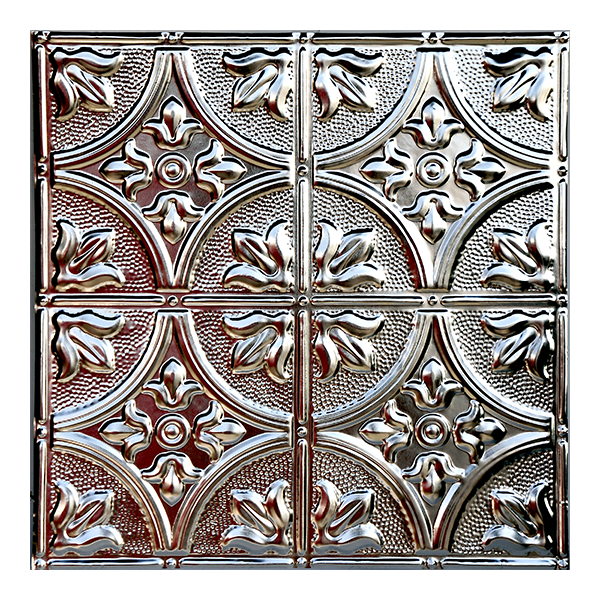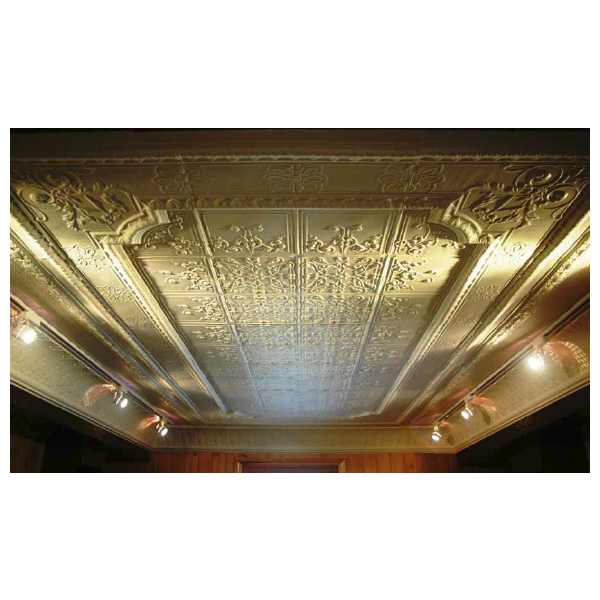TIN CEILING PANEL
Tin ceilings were introduced to North America as an affordable alternative to the exquisite plasterwork used in European homes. They gained popularity in the late 1800s as Americans sought sophisticated interior design. Durable, lightweight and fireproof, tin ceilings were appealing to home and business owners alike as a functionally attractive design element that was readily available.
It was during the late Victorian era that thin rolled tin-plate was being mass-produced. Between 1890 and 1930, approximately forty-five companies in the United States marketed metal ceilings; most were in Ohio, Pennsylvania, and New York, located along railroad lines that served as the main routes for delivering the pressed metal products directly to contractors. Sheets of tin were stamped one at a time using rope drop hammers and cast iron molds. Using this method of production, metal was sandwiched between two interlocking tools.
The top tool, or "ram," was lifted up by a rope or chain, then dropped down onto the bottom die, smashing into the metal that was underneath and permanently embedding intricate patterns into the tin. Tin ceilings were traditionally painted white to give the appearance of hand-carved or molded plaster. They were incorporated into residential living rooms and parlors as well as commercial businesses, where painted tin was often used as wainscoting.
In the 1930s, tin ceilings began to lose their popularity and ceilings as a design element were ignored. In the 21st century, some renewed interest has been shown in tin ceilings.
It was during the late Victorian era that thin rolled tin-plate was being mass-produced. Between 1890 and 1930, approximately forty-five companies in the United States marketed metal ceilings; most were in Ohio, Pennsylvania, and New York, located along railroad lines that served as the main routes for delivering the pressed metal products directly to contractors. Sheets of tin were stamped one at a time using rope drop hammers and cast iron molds. Using this method of production, metal was sandwiched between two interlocking tools.
The top tool, or "ram," was lifted up by a rope or chain, then dropped down onto the bottom die, smashing into the metal that was underneath and permanently embedding intricate patterns into the tin. Tin ceilings were traditionally painted white to give the appearance of hand-carved or molded plaster. They were incorporated into residential living rooms and parlors as well as commercial businesses, where painted tin was often used as wainscoting.
In the 1930s, tin ceilings began to lose their popularity and ceilings as a design element were ignored. In the 21st century, some renewed interest has been shown in tin ceilings.
-
TIN CEILING PANEL
-
TIN CEILING FINISH
-
TIN CEILING GALLERY





